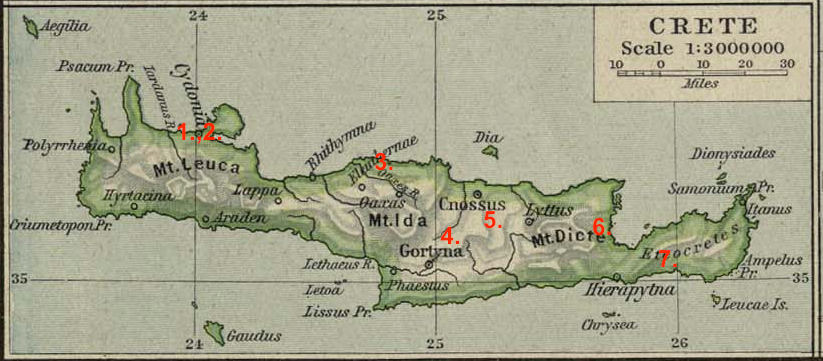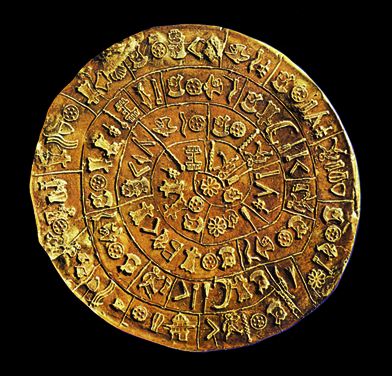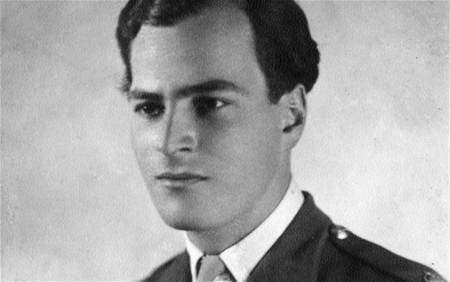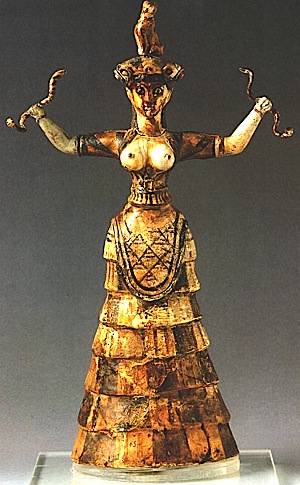To be a sultan even for only twenty days is an achievement. Cem Sultan paid for it for the rest of his life. Here is his story.
Born the third son of Fatih Sultan Mehmet (the conqueror of Constantinople), Cem could style himself as ‘porphyrogenitus’, being born when his father was an emperor, unlike his two brothers Beyazıt and Mustafa (the latter of whom died soon after and is not part of the story). According to Ottoman tradition, princes were sent out to the provinces while still very young, to learn the ropes. Cem was made governor of Kastamonou at the tender age of five. He took up residence there with his mother, his tutor (his lala) and his court. Later he was promoted to Konya and it was there that he learned of the death of his father. Not yet fifty, Sultan Mehmet had probably died of exhaustion. Already a ruler at twelve, deposed at fourteen and reinstated at nineteen, he went on to conquer Constantinople two years later, embarking afterwards on non-stop wars of conquest in the Balkans and Anatolia. He literally had been burning the candle at both ends.
Mehmet left no arrangements for his succession, which may appear strange since he was well aware of the dangers of civil war. On his accession he had had his one baby brother drowned (or strangled—both methods acceptable as long as Muslim blood was not shed) ‘for the sake of public order’ and had the practice codified in law. The Turco-Mongol tradition leaves to God the choice of ruler from among the males of a specific bloodline. Anyone interfering would be subverting divine will, which equals heresy. But how does God manifest his choice? By granting favour (kut), i.e. the claimant who could maintain himself on the throne could claim divine support. The tradition did not recognise primogeniture of any other form of seniority.
After Mehmet’s death, it was Cem who won the first round. He got himself to Bursa, seized the treasury, minted coins in his own name and was Sultan for twenty days. This was as much time as Beyazıt needed to move from Amasya, where he was governor, gather his troops (the Jannissaries had declared for him) and beat Cem soundly at Yenişehir. Cem fled for his life with his immediate family, all the way to Egypt. While plotting further action, he made the pilgrimage to Mecca (the only Ottoman sultan to have done so) and proposed to Beyazıt that they split the empire. He would rule Anatolia while Beyazıt would control Rumelia, the European provinces. Beyazıt’s answer was unequivocal: absolute power could not be split. ‘Sultans do not have a family’ he said, setting the tone for future Ottoman autocracy.
One last attempt at seizing Konya ended in disaster and Cem had to flee again. This time he did not go to Egypt, where he had left his family, but to Rhodes, the piece of European soil within easiest reach. He was acquainted, moreover, with the local rulers, the Knights of St John, with whom he had been instrumental in negotiating a settlement after his father’s failed attempt to conquer the island. The Order of St John embodied a mixture of military, political, religious aspirations: assisting pilgrims to the Holy Land, checking the advance of the Turks, flying the flag of Catholic Christianity in the East. Cem calculated that the Grand Master of the Order, Pierre d’Aubusson, who lived in Rhodes, would be able to help him gather European support in his quest for justice, or at least a share of the Empire. At the same time, however, d’Aubusson was in touch with Beyazıt, who was geographically his near neighbour and with whom he had to find a modus vivendi. The result of the negotiations was that d’Aubusson would keep Cem well—and well out of the way—and in return the Sultan would maintain friendly relations with Rhodes and help with an annual contribution of 40,000 gold pieces towards Cem’s upkeep. It is difficult to put a modern figure on this sum of money, sometimes described as ducats or florins, but it was certainly a good deal, well in excess of Cem’s needs. There was enough left over to improve the fortifications of Rhodes and later to tempt the greed of a pope (see below).
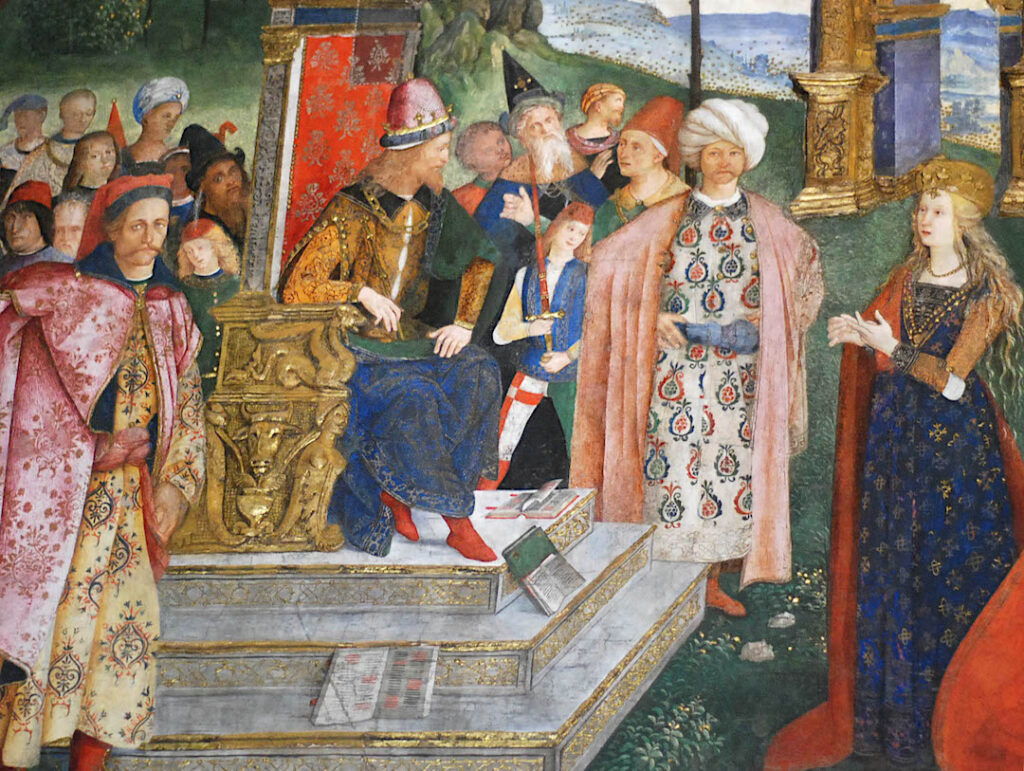
Cem, on the other hand, had completely different ideas. He pictured himself at the head of a European coalition to stop the Turks—or at least one particular Turk, his brother. In this he intended to enlist the support of the King of Hungary, Matthias Corvinus. One has to bear in mind that the Hungarian kingdom had historically reached far beyond the Danube and that it had felt Ottoman pressure right from the beginning. Cem was counting on d’Aubusson to help him make contact with the King of France, gain his support and ensure a safe passage to Hungary.
And so to France! Cem left Rhodes (without his family, who remained in Egypt) with a suite of forty or so ‘companions’; a concubine Almeida, constituting a harem of one; a number of Turkish slaves purchased at the thriving slave market in Rhodes; and an unspecified following of spies and agents sent on the orders of Venice, of the Sultan and of anyone else interested in this up-and-coming ‘hot property’. As a prince of Ottoman blood, pretender to the throne, Cem had become just that.
The passage to the French Mediterranean coast was uneventful, but Cem and his retinue could not land in Toulon because of plague. The company opted instead for Nice, then in the Duchy of Savoy. Here they were accommodated in the castle, on a rocky outcrop between the harbour and what is now the Promenade des Anglais. Cem spent his time waiting for things to happen and whiling away his time with a pet monkey who could play chess and a parrot who could recite suras of the Koran.
Things began to move again in 1483. The party progressed through Piedmont, crossing the Montcenis pass in winter, and arrived in Chamonix to meet the Duke of Savoy, a lad of just fourteen. There was still no sign of the French king, nor of his envoys, nor of the passport to Hungary. This was due not so much to lack of cooperation from the king as to the fact that he had not apparently been informed. D’Aubusson was clearly intending to keep his side of the bargain with Sultan Beyazıt, to keep Cem ‘well out of the way’, to all intents and purposes a prisoner. This was the reason behind the detour into Piedmont, where the knights could count on secure accommodation in their various commanderies (fortified buildings).
From Chamonix the way was due northwest, to d’Aubusson country, la France profonde, skirting the Grand Chartreuse massif into the Auvergne and beyond into the Creuse around Limoges. Accommodation was always in some form of defended outpost (Rochechinard, Monteil-au-Vicomte, Poët-Laval etc), which can still be identified though most are in a sorry state today. Along the way, romantic attachments with various châtelaines have entered local lore. And Cem was not the only male in his party. There were his companions as well as an unspecified number of Turkish slaves. Talk of large-scale DNA testing, searching for potential kinship links, has come to nothing so far.
In 1484 at Bourganeuf, 40km east of Limoges, Cem and his company were offered accommodation in a château at the centre of the fortified village belonging to d’Aubusson himself and where his sister was living at the time. On the pretext that the rooms were unsuitable, but in reality fearing kidnap or the flight of the prisoner, it was decided to build new, secure accommodation while housing Cem and company nearby. More removals, more disruptions. The building process took two years. There can be no doubt that the tower known locally as the Tour Zizim (apparently from Cem’s childhood nickname, or perhaps because the local people could not pronounce his name properly) was effectively a prison: a seven-storey building accessed via a walkway from another tower of the castle. The first opening was 10m off the ground. The tower can be visited. Inside, the seven floors connected by a central spiral staircase included (from the bottom): a cellar, kitchen and stores; the companions’ accommodation; Cem’s own apartment on two storeys, with his harem above it (still a one-person harem); guards on the top floor and more guards on the roof. Rumours of a hamam are unconfirmed. Here Cem stayed for two years and three months. Not so Almeida, who killed herself.
Meanwhile, in the outside world, things had moved on. When the King of Hungary died the focus of a crusade moved to Rome, to Pope Innocent VIII. Negotiations produced the expected result. D’Aubusson got his cardinal’s hat and relinquished Cem and his appanage, who were taken into custody by the pope. In the spring of 1489, Cem and his suite were moved to Rome where he was lodged in the Vatican, occupying the floor above the pope’s apartment in the Apostolic Palace, overlooking the Cortile del Pappagallo. From Mantegna’s correspondence (he was working in the Palazzo del Belvedere) we get an unflattering description of a moody, alien character.
Beyazıt then made a new arrangement with the pope. Not only would the sultan continue to pay the very generous pension, in exchange for which Cem would be ‘kept well and well out of the way’, but as a sweetener he added a relic, the metal point of the spear that had wounded the Saviour on the Cross. Istanbul was awash with relics and the Turks soon realised their bargaining power with the Christian West. Alas, this particular relic proved ineffective in dealing with Innocent’s health problems and he died in 1492. Even so, the item figures prominently in his left hand in his tomb monument by Antonio Pollaiolo, which can be admired in St Peter’s.
There is no evidence that Cem was free to come and go as he pleased in Rome, but perhaps it was more appealing than a prison-tower in the middle of nowhere in France. Mantegna’s testimony, though, may suggest bouts of depression.
When Innocent died, Cem graduated to a tighter regime during the conclave. He was still ‘hot property’ and was confined to a tower for the duration of the conclave. Worse was to come. The new pope was a Borgia, Alexander VI. He was determined to use Cem for his schemes, which included a crusade. It never materialised, partly because of disagreements among the perspective participants, chief among them Venice, who was to have supplied the vessels but was very unwilling to upset relationships with the Porte at a time when the Serenissima was trading happily with the infidels in spite of the papal prohibition.
In the meantime the French king, Charles VIII, had decided to act upon his claim to the throne of Naples and in 1494 crossed the Alps to claim his due. Cem this time ended up with the pope himself in Castel Sant’Angelo, the one-time mausoleum of the emperor Hadrian later turned into a fortress. In spite of his determination to hang on to his precious hostage, Pope Alexander had to surrender him to the French king, who also had the same ill-defined ambition of a crusade. It was a difficult time for the Borgias as they were short of money and Beyazıt’s subsidy was quite handy.
Cem just made it to Naples and died in Castel Capuano, at that time the residence of the King of Naples, who was currently in exile. This was a blow for the French king and his ambitions. In the end his mad cavalcade from Paris to Naples came to nothing and he went back home—though not empty-handed. In his train were 43 tons of booty: carpets, tapestries, books, marbles, furniture, the bronze doors of Castel Nuovo and even a set of stained-glass windows. Not all of it made it to France, notably the doors, one of which was used as a shield in a naval battle and was hit by a cannon ball that is still embedded in it. They were sent back to Naples where they can still be admired.
By 1498 the French king was dead and buried. Things were not so simple for Cem, who had died in February 1495 but had still not been buried in the way that Beyazıt wanted, i.e. with the actual body, very publicly in the Empire, to make sure that every citizen knew that the claimant to the throne was truly dead. The problem was twofold. First it was necessary to ensure that the body was really Cem’s. To that effect his two last companions were tasked to guard it day and night. They had already embalmed it, burying the entrails in the garden of Castel Capuano, and then wrapped it in an emergency shroud, in this case one of their turbans.
The lead coffin now awaited transport to Istanbul but that was not so easy. The last thing the Italians wanted to see were Turkish vessels cruising off their shores. The occupation of Otranto by Mehmet Fatih in 1480–81 was still fresh in everyone’s memory. In the end the transport was organised by the King of Naples: overland to Lecce, across the Adriatic to Valona and then by land to Istanbul. Cem was buried in 1499 with full honours in Bursa alongside his brother Mustafa. The surviving companions were rewarded. There is no mention of what became of the parrot and the monkey.
At 35 Cem had spent seven years and two months in France and six years and two months in Italy, in something very close to captivity in unfamiliar surroundings, away from his family and without advancing his cause an inch. If depression and frustration can kill, this would be a textbook case. The curse extended to his progeny. When Sultan Suleiman conquered Rhodes in 1522, he sought out Cem’s son Murat (now a Christian by the name of Niccolò) and had him killed. According to some he may have killed Murat’s son as well, unless the young man had already decamped to Malta, where the Knights of St John had moved. The curse of the Ottoman blood was apparently unforgiving.
by Paola Pugsley. Her latest book, Blue Guide Mediterranean Turkey, was published in 2020.







